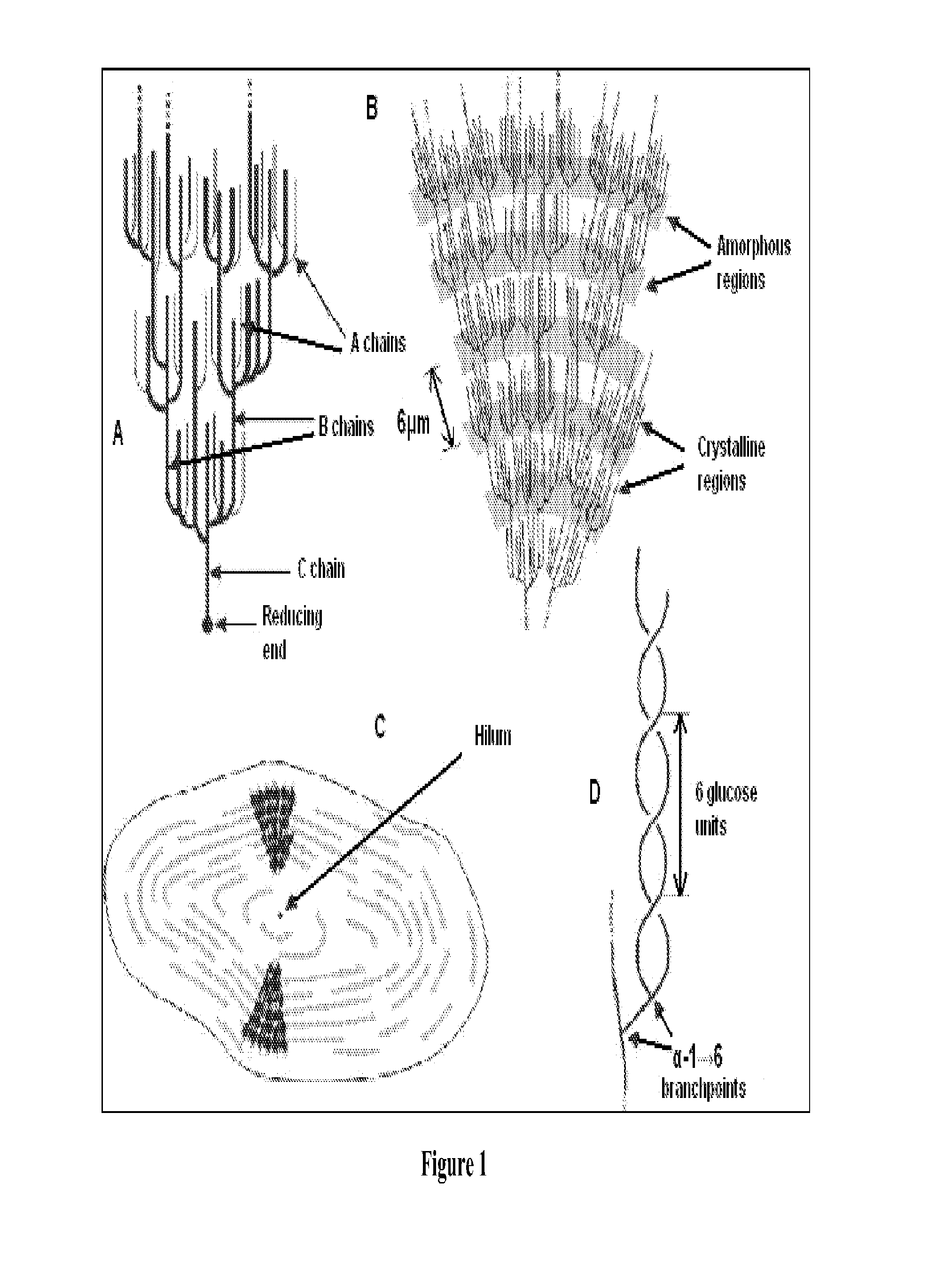Methods of preparing potato food products with enhanced resistant starch content
a technology of resistant starch and potato food, which is applied in the functions of food ingredients, milk preservation, food science, etc., can solve the problems that the different thermal properties of starch are influenced by the different fractionation methods
- Summary
- Abstract
- Description
- Claims
- Application Information
AI Technical Summary
Benefits of technology
Problems solved by technology
Method used
Image
Examples
example 1
[0130]To investigate modification with actual commercial food-grade reagents, commercial potato granules were substituted with propylene oxide (PO) using a factorial experimental design consisting of four PO addition levels (4.6%, 9.1%, 12.8% and 18.3% [w / w], based on potato granule dry weight) and two reaction temperatures (22 and 48° C.). Molar substitution (MS) values increased with both increasing PO addition levels and reaction temperatures. Enhancement of PO MS levels with increasing reaction temperature was attributed to a combination of possible factors including increased swelling of starch, a possible reduction of the Donnan potential, and / or a greater proportion of deprotonated starch alkoxide ions available for reaction. A positive correlation (r=0.93) between PO MS and RS levels indicated that incorporation of bulky hydroxypropyl groups onto starch molecules resulted in steric hindrance to the enzymic digestion, effectively promoting RS formation.
[0131]In contrast to RS...
example 2
[0132]In a second factorial experiment, the combined effects of PO substitution (0%, 10%, and 20% [w / w], based on potato granule dry weight), cross-linking with sodium trimetaphosphate (STMP) (0%, 1%, 2%, and 4% [w / w], based on potato granule dry weight), and reaction temperature (22, 34 and 48° C.) were investigated in regard to degrees of derivatization and RS formation. Both PO and STMP significantly contributed to RS formation, though the combined effects of two reagents were simply additive, rather than synergistic. The estimated Glycemic Index (eGI) for dual modified potato granules was significantly decreased by derivation (from 116.4 for unmodified granules to 59.7-65.9 for dual-modified granules), affecting both the rate and extent of starch hydrolysis by amylolytic enzymes. From a practical standpoint, the higher allowable reagent addition levels make PO a better choice than STMP for enhancement of RS content and reduction of the glycemic response within commercial potato ...
example 3
Separation and Isolation of Intact Parenchyma Cells from Raw (Uncooked) Potato (Solanum tuberosum) Tissue
[0218]Resistant starch (RS) consists of starch material that passes undigested through the small intestine into the large intestine (Englyst, et al., 1992), where it is fermented by bacterial microflora within the colon into short-chain fatty acids and other secondary metabolites, contributing demonstrated physiological benefits (Champ, 2004; Wong and Jenkins, 2007; Topping, 2007; Sharma et al., 2008).
[0219]Within native potato tissue, starch granules undergo swelling and gelatinization (loss of molecular order) during cooking, rendering gelatinized starch readily digestible. Consequently, cooked potato tissue retains little RS.
[0220]Nevertheless, potato starch in its native granular form in raw potato tissue is extremely resistant to human digestion (RS-type 2), and is further encased within a cell wall structure (i.e., physical barrier, potential source of RS-type 1). To date, ...
PUM
 Login to View More
Login to View More Abstract
Description
Claims
Application Information
 Login to View More
Login to View More - R&D
- Intellectual Property
- Life Sciences
- Materials
- Tech Scout
- Unparalleled Data Quality
- Higher Quality Content
- 60% Fewer Hallucinations
Browse by: Latest US Patents, China's latest patents, Technical Efficacy Thesaurus, Application Domain, Technology Topic, Popular Technical Reports.
© 2025 PatSnap. All rights reserved.Legal|Privacy policy|Modern Slavery Act Transparency Statement|Sitemap|About US| Contact US: help@patsnap.com



